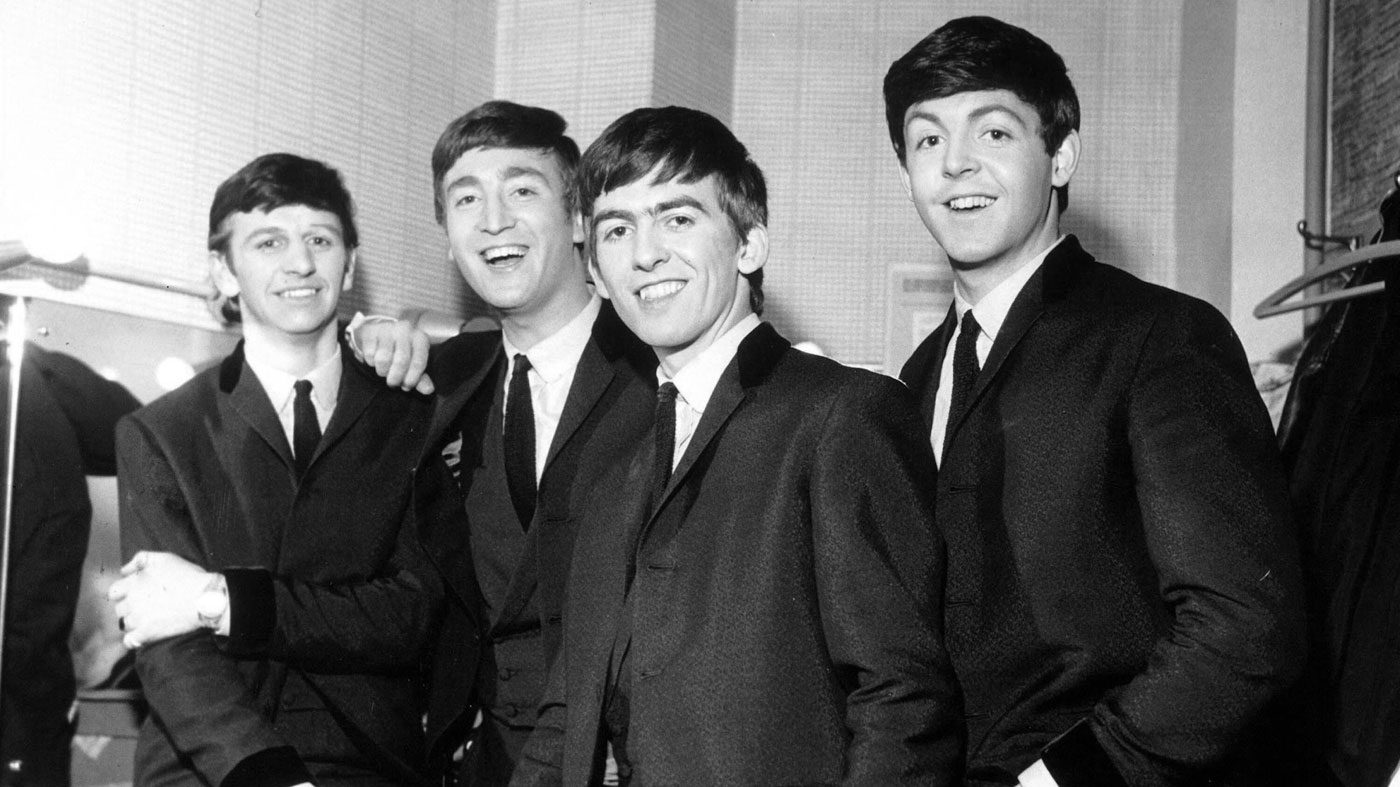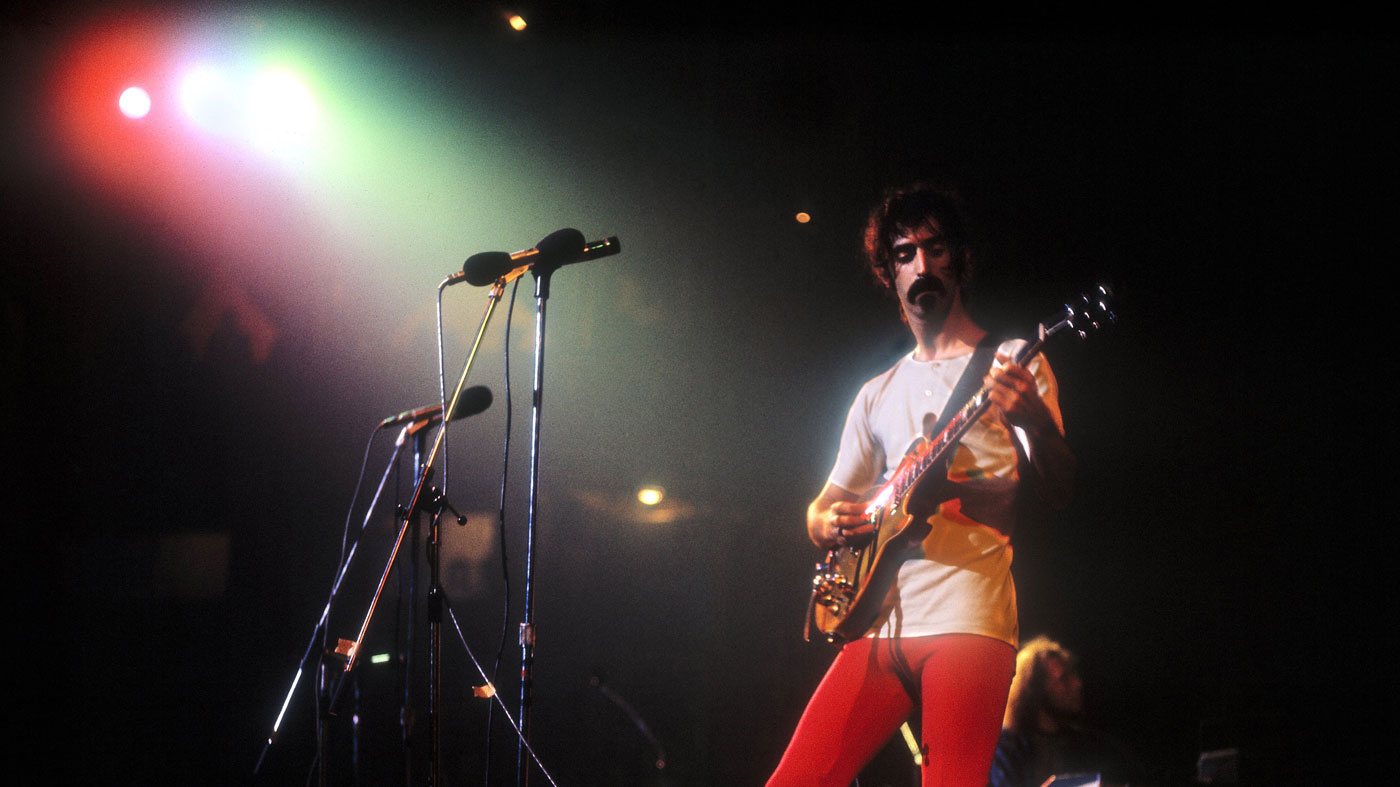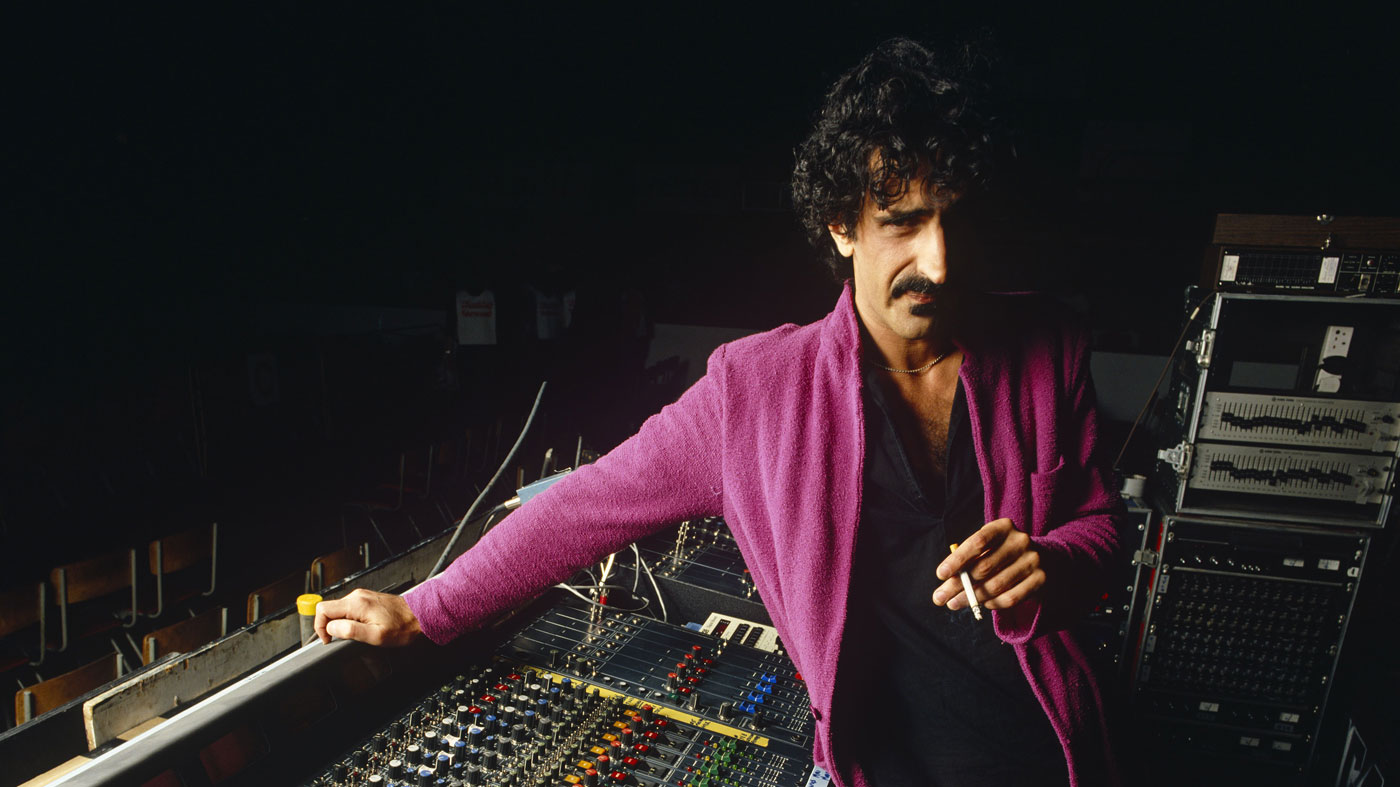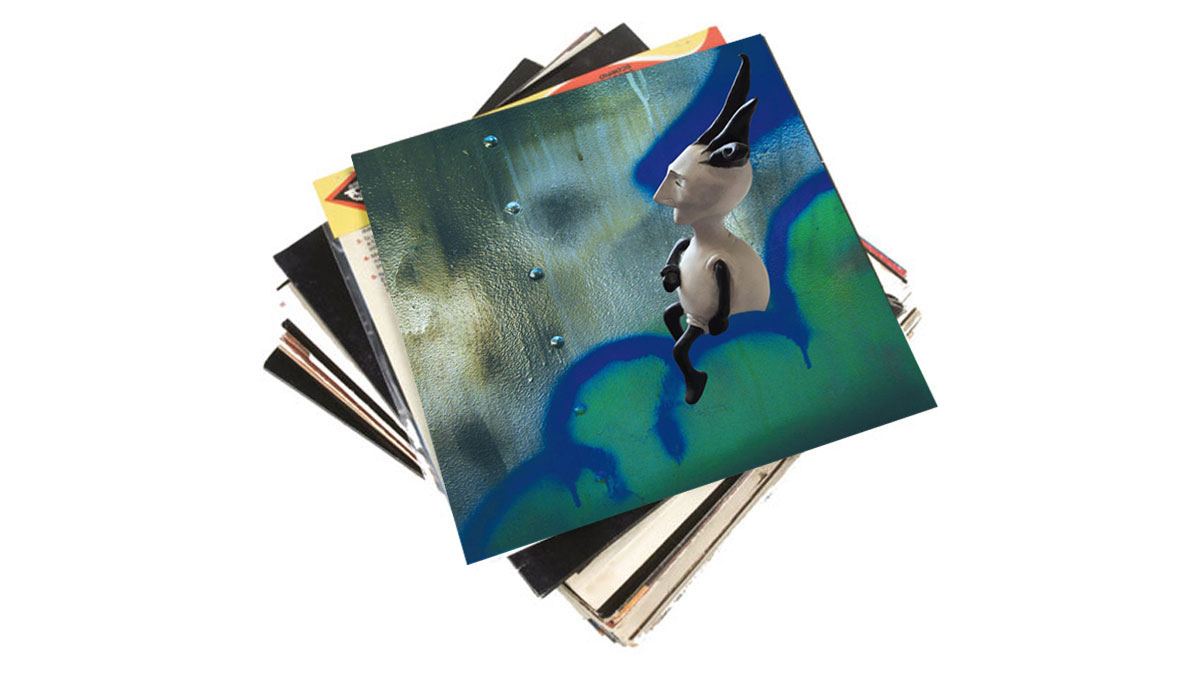Mike Keneally's 10 tips for guitarists
Life lessons from the Zappa, Satriani and Vai collaborator

Introduction
Mike Keneally has enjoyed a career that most guitarists would envy. His first major gig was playing in Frank Zappa’s band during the 1988 tour and, since then, he’s been seen in the company of both Steve Vai and Joe Satriani, most recently on this summer’s G3 outing.
He’s been seen in the company of both Steve Vai and Joe Satriani, most recently on this summer’s G3 outing
He’s also enjoyed a solo career, his latest release being Scambot 2, the sequel to 2009’s Scambot, which details the somewhat surreal adventures of a little character that came to life as a casual jotting in one of Keneally’s sketchbooks.
He possesses some amazing chops on the guitar, but, surprisingly, he considers it his second instrument, being a bit of a whizz on keyboards as well. Here, he describes what it’s like to be a sideman to superstars as well as soloist in his own right.

1. Get off to a fab start
“I started on keyboard when I was seven and didn’t pick up guitar until four years later, but music was always in the house when I was very young.
From the time I was about four or five, I was pretty much obsessed with The Beatles to the exclusion of almost all other aspects of life
“There were always records playing, but then I was born in the early 60s and I had a teenage sister, so she was just the right target demographic to be a Beatles fan.
“When The Beatles started putting out stuff with guitars on, she started feeling like it was getting too out there for her and she started listening to the Four Seasons and I ended up inheriting her Beatles records. So, from the time I was about four or five, I was pretty much obsessed with The Beatles to the exclusion of almost all other aspects of life.”
2. Learn to adopt and adapt
“I was always fascinated by guitar, as a result of my Beatles obsession. Their guitars were so beautiful and they sounded so crystalline and magical on the records; they were like talismanic objects that I was fascinated by.
“I might have thought that they were a little beyond me, because they seemed to possess this magic property, but after a couple of years, I summoned up the bravery to ask for a guitar for my 11th birthday. I was taking organ lessons at the time, which turned out to be pretty much the sum total of my music education, so I would try to take what I was learning on the keyboard and apply that to the fretboard.”

3. You can make order from music's chaos
“I conceptualised that a guitar was like a series of six keyboards lined up next to each other, each one starting on a different note, and it took a little bit of doing to figure out. I guess I had enough ability for spacial recognition to realise, ‘Oh, that E is the same as this E…’ It was just trial and error, like anything.
When I became obsessed with Zappa, it wasn’t as a guitar player - it was this complete subversive antisocial thing that he represented
“Picking out melodies was pretty fast work, realising that a whole step is two frets and a half step is one. That’s not too hard to work out. The real struggle, like any beginning guitarist, is executing a barre chord. That’s the one that takes a while!”
4. Tune in and Freak Out!
“I guess it was probably three or four years after The Beatles took over when I first heard Zappa. When I became obsessed with Zappa, it wasn’t as a guitar player - it was this complete subversive antisocial thing that he represented.
“The first music by him that really got me was the song Help, I’m A Rock from Freak Out! [1966, The Mothers Of Invention], and when I was 10 I heard the entirety of We’re Only In It For The Money [1968]. And I guess I was already a budding subversive at that age, because everything about that record just made perfect sense to me. I would just play it over and over. As soon as side two was over, I would flip it and start side one again.”

5. Just pick up the phone and dial
“I literally just called up Zappa’s office and asked for a job, because I’d heard he was in rehearsal with a new band. I said, ‘Hey - if Frank’s looking for anybody, then I play guitar and keyboard and I sing and I know all of Frank’s music.’ I guess I was just lucky that the gentleman I spoke to at Frank’s office believed me and passed the word on to Frank.
He was getting a kick out of playing with this new resource - what he came to refer to as ‘The Walking Encyclopaedia’
“Then Frank called me up the next day and said, ‘You know how to play all of my music? Do you realise how many songs that is?’ and I said, ‘Yeah. They’re all in the next room.’ And then he said, ‘I don’t believe you. Get your ass up here and prove it.’”
6. Locate your rebel database
“Frank said, ‘Okay, play me Sinister Footwear and What’s New In Baltimore?’ So, I played those for him and that was okay and then he said, ‘Let me test you…’ and he just started naming a bunch of songs like, We’re Turning Again, and he was like, ‘Okay. Do you know this? Do you know this?’ and everything he named I was able to play for him.
“He was getting a kick out of playing with this new resource - what he came to refer to as ‘The Walking Encyclopaedia’ - which ended up being really useful during rehearsals when there was some song that he hadn’t played for a long time.”

7. Maintain your solo career
“The first album that came out and got some kind of exposure was in 1992, an album called Hat, and that was 24 years ago and I’ve averaged about an album a year since then. I always have a few sketchbooks in the works and one day I drew this weird little guy and I named him ‘Scambot’ for no particular reason.
I’m always kind of thumbing through my sketchbooks, seeing if anything might spur an idea for a song or anything
“I’m always kind of thumbing through my sketchbooks, seeing if anything might spur an idea for a song or anything, and there was just something about the way that guy looked. I wanted to construct some kind of an elaborate storyline around him and I started making up little plot details - and they just got more and more ridiculous and Scambot came out in 2009.”
8. Source your inner Eno
“It’s meant to be a trilogy, when all’s said and done. Scambot 2 starts off at maximum complexity and gets gradually more airy and more basic until, by the end of the album, it’s actually less convoluted. I see that arc continuing for the final album in the trilogy, whenever that happens. I see it as being like my version of an ambient album. As close to Eno as I get!
“Scambot 3 is going to describe the environment that people are entering at the end of Scambot 2, which is a very different kind of space. “So, that’s the journey both narratively and musically that I’m trying to describe over the course of the three volumes.”

9. The key to successful sidemanship is…
“When I’m doing my music there are no limits. When I joined Satriani’s band, I expected it to be a lot more strict and a lot more stringent in terms of structures. As it turns out, he does welcome quite a bit of improvisation, especially now that he’s got Bryan Beller and Marco [Minnemann] in the band.
Even if you’re a super virtuoso, if you’re a prick on the tourbus nobody’s going to want to tour with you
“I think he realised that the more he allowed stuff to happen, the more fun it was for everybody. There’s quite a bit of freedom, but, still, in comparison to my gig, it’s very disciplined. When I’m playing in somebody else’s band I’m an employee with a job to do and I’m perfectly fine with that. I enjoy it and I’m grateful for the opportunity to be who I am and do what I do in this different kind of context.”
10. …Don’t be a showboater
“Even if you’re a super virtuoso and you can execute any piece of music, if you’re a prick on the tourbus nobody’s going to want to tour with you. People want to have a good time. It helps to be somebody that you can have a laugh and relax with, and you definitely can’t be precious about the fact it’s not your gig.
“You are serving somebody else’s music and you’re serving the audience for that music. If you and your own agenda get in the way of that music, you’re going to make the guy whose name is on the ticket unhappy and you’re going to make the audience unhappy, because they’re going to think, ‘Who’s this showboat on stage who doesn’t care about the song?'”
Mike Keneally’s new album, Scambot 2, is available via Exowax Recordings or as a download from his website www.keneally.com.

